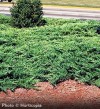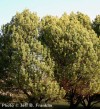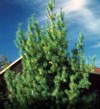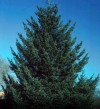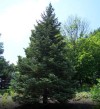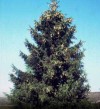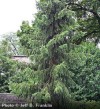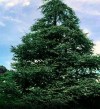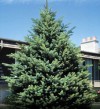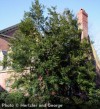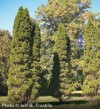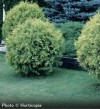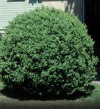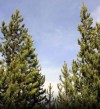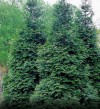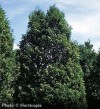http://www.hamonslandscaping.com/landscaper-thoughts/top-10-kansas-city-landscape-plants-2/
1. Allegheny Viburnum (Viburnum rhytidophylloides ‘Allegheny’)

4. Walker’s Low Catmint (Nepeta x faassenii)
6. Little Henry Sweetspire (Itea Virginica)
Top 10 Kansas City Landscape Plants
1. Allegheny Viburnum (Viburnum rhytidophylloides ‘Allegheny’)
This plant works great when you need a large shrub to add structure to the back of a bed or as a screen in the back yard. it is not tidy enough to be used as a specimen plant or in any highlighted position With care it can grow to 12 feet tall in less than 5 years. I have several planted as a screen against a shed in my backyard and I have pushed them hard – but they are over 15 feet tall in just 5 years.The shrub has thick 6” leaves that are thickly textured and beautifully colored. It has a surprising delicate white flower that persists for Most of May and then ripen into bright red fruits by October. I call it semi-evergreen because about 1/2 the leaves stay attached for most of the Winter.This is one of my favorite plants and I recently used it in a very fun project that turned out very well (despite the quality of the photographs). These will grow beautiful and provide the perfect screen for this deck and offers an alternative to the overused juniper and arborvitae.
2. Sweetbay Magnolia (Magnolia virginiana)

Magnolias often come and go as peoples favorite plants. However, this one has and always will be my favorite for planting in Kansas Citylandscapes. It is better suited than many for our zone and grows luxuriously well. My favorite form is when it is grown as a multi-stemmed shrub. It has a striking upward growing habit that gives it a strong architectural presence and lends itself well to be a focal plant inlandscape planting.I have two of these planted as pillars on the front corners of my house. They have performed very well for about 4 years now and have grown taller than the roof of my raised ranch.
3. Hardy Banana ‘Musa Basjoo.
The Hardy Banana plant is a plant that grows VERY well in Kansas City. I have had them growing at my house for going on 4 years and a customer has had them successfully growing for over 8 years.These pictures show them growing in my yard in early July. By September they had pushed leaves higher than the roof of the porch you can see there. That is approx 18 feet high.
Although these look very tropical they are easily grown even in our unpredictable KC winters. They will die back to the ground in the winter and begin to grow again in the spring. The more protection you give them the bigger they will get the following year because you will protect more of the plant – giving it a head start on next years growth. I try to protect several of the biggest plants so they will grow as large as possible the following Spring. I protect them by building 4’ tall cages around them and filling them with leaves. This si the secret to really big plants. However, even unprotected plants will reach 10’
Another bonus – they reproduce madly. You will easily triple your number of plants every year as new pups sprout around the base of the mother plant.
4. Walker’s Low Catmint (Nepeta x faassenii)
I would choose this plant as one of my all time favorite perennials to use as a llandscaper. Not because of how showy it it or how rare it is or for any ONE attribute. Rather, because it has so many very good uses and it has never let me down.
This plant has small bluish green leaves that are highly fragrant leaves that smells like mint. The plant grows in a mound about 1 foot high and 2 feet across. however after its first season in the bed you will not be able to tell its shape because it will have spread through runners and be taking up much more space than that. In fact this may be the only time I would not use catmint – is if you need it to stay perfectly contained because it is so hardy and likes to spread. The flower begins blooming in June. If about 3 weeks later you shear off the old blooms you can easily extend its blooming into late summer. The blooms are a pale lavender and spread across the plant like a purple mist.It was named Perennial of the Year in 2007 for its versatility and hardiness.
5. False Indigo (Baptisia australis)
I have been in love with this plant since the first time I saw it in full bloom when driving past a very neglectedgarden in the middle of July. Everything else in thegarden had died including what looked like remnants of stella d’ oro’s and some poorly placed care-free roses. I quickly took a mental note and the next time I was at my favorite nursery I bought a couple plants.
I was not immediately impressed. The plant just stood there for the entire season. The next year it was about the same. But, by the third year it had really taken off and is now one of the plants people always notice when they walk around and see that part of my garden.Baptisia has since proved its worthiness in many designs and ahs often become a favorite plant to use in landscape designs. It does have it quirks though. Number one – it is a plant that you have to plant and leave it alone. it does not transplant well once it is established in your bed because of it unique rooting structure (which is also responsible for its durability. Secondly – I have found it is incredibly sensitive to any kind of sprays. In my incessant meddling I am always trying things that will supercharge my plants. During one of these ‘experiments’ I was spraying a mixture of compost tea and iron on few plant in my garden around the Baptisia – and it turned black over night – the entire plant. The plant recovered fully – but it took a while. I have since learned that any foliar spray will have varying degrees of the same effect.
6. Little Henry Sweetspire (Itea Virginica)
This shrub is a great plant that fits into almost every kansas city landscape in some part. In order for a plant to become a favorite of mine, it has to be versatile, tough and at least interesting inall season. Sweetspire does this. It is deciduous shrub that can grow up to 5 foot tall in a roughly globular fashion. There is a very similar variety call Little Henry’s Sweetspire that is nearly identical – but more compact. This shrub has two times of the year that it is a knockout. One time is in early June when it shows off its long beautiful blooms. It is equally beautiful in the fall when the foliage turns into a striking shade of crimson…and…the leaves persist well into mid winter.
7. Drift Roses (Rosa ‘Meijocos’)
I will have to admit that although I hate to admit it I do love Knock Out Roses. I was one of their first big proponents and had a bush that was kind of secretly handed to me before they were publicly being sold. However, in the last 10 years they have become victims of their own success and are now way over planted and used in every subdivision entrance, every front yard bed and around every park sign. Now I feel a little guilty when I reach out for the knock-out rose once again for the customer that says they want low maintenance year-round color. There just is not another plant that can match up in those situations – unless – you were looking for something smaller.
From the same breeders who gave us the knockout rose we now have the Drift rose. This is essentially a groundcover rose (around 3 feet high) with all of the great benefits of the knockout rose, but in a smaller package. It blooms from early spring until the first frost, it is disease resistant, and it is extremely cold hardy.I find it works great to line a walkway with when you do not want the height offered by a knockout rose. It can also work great planted at the edge of a rocky wall.

